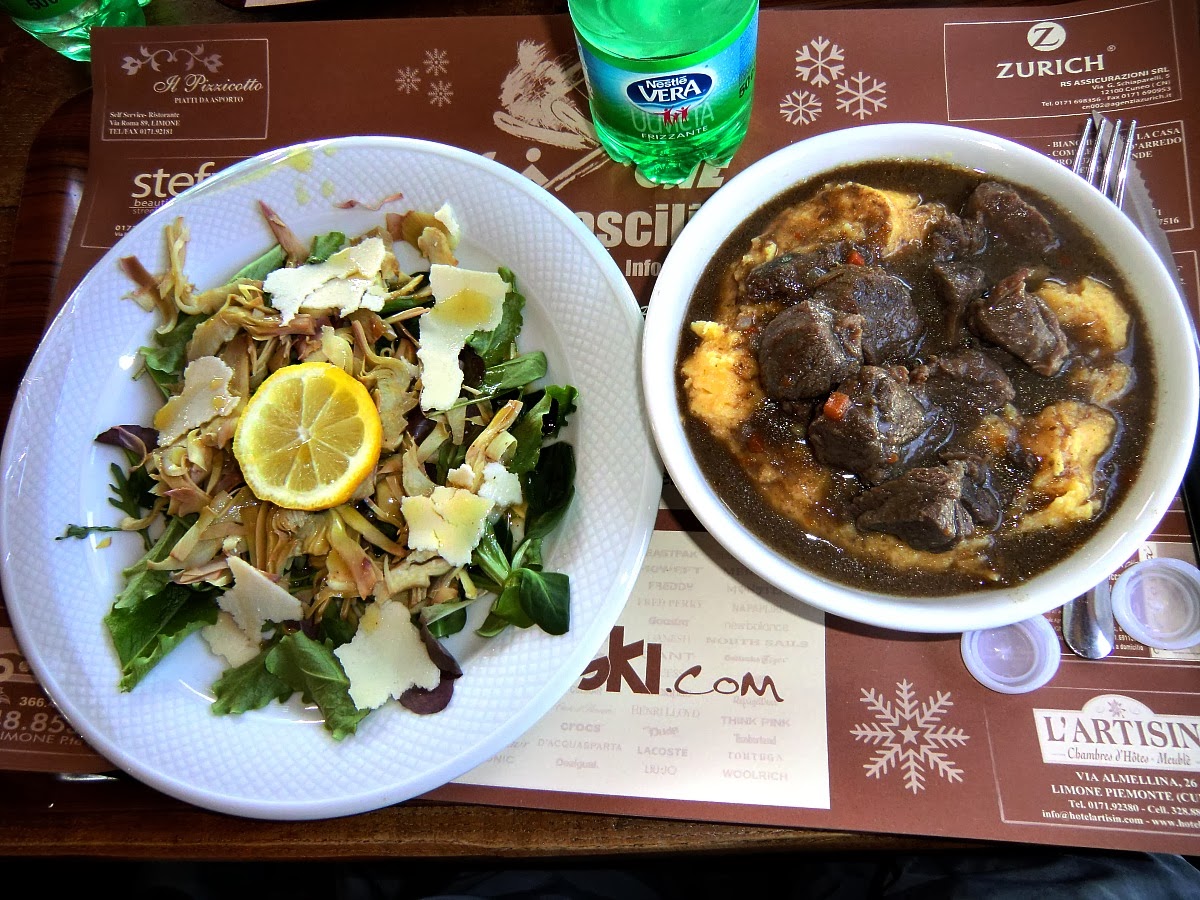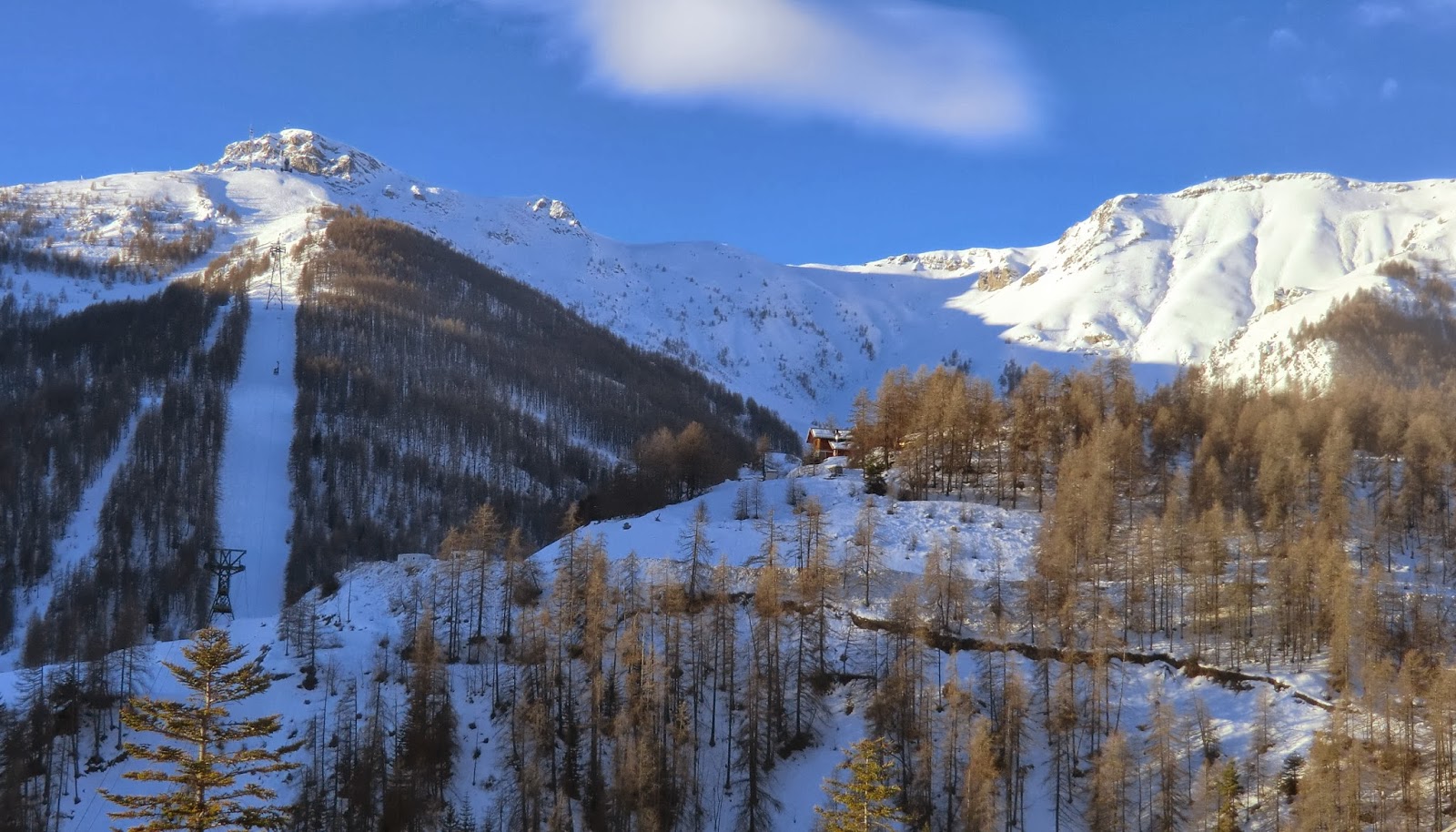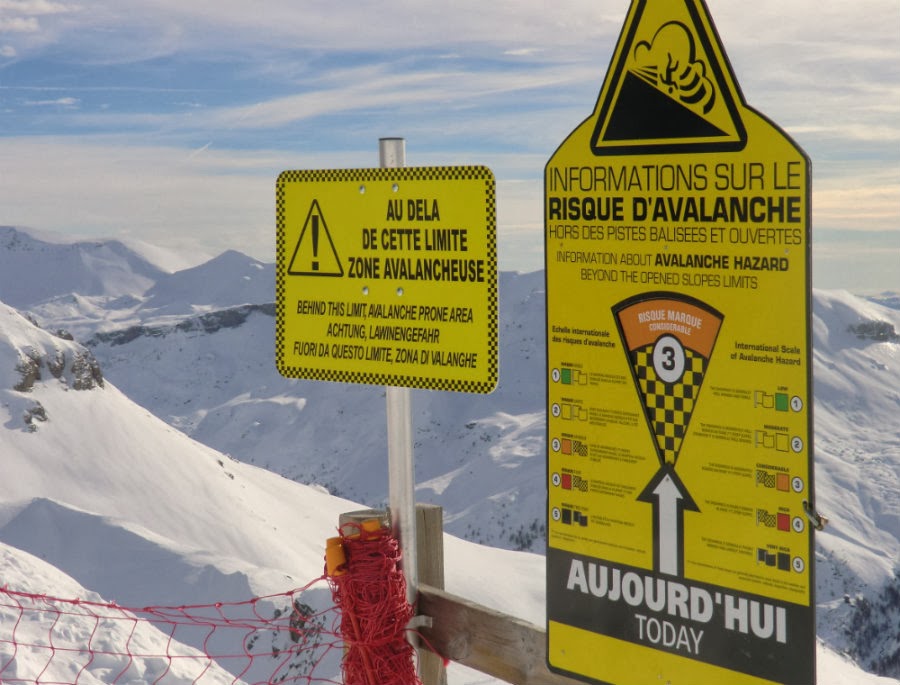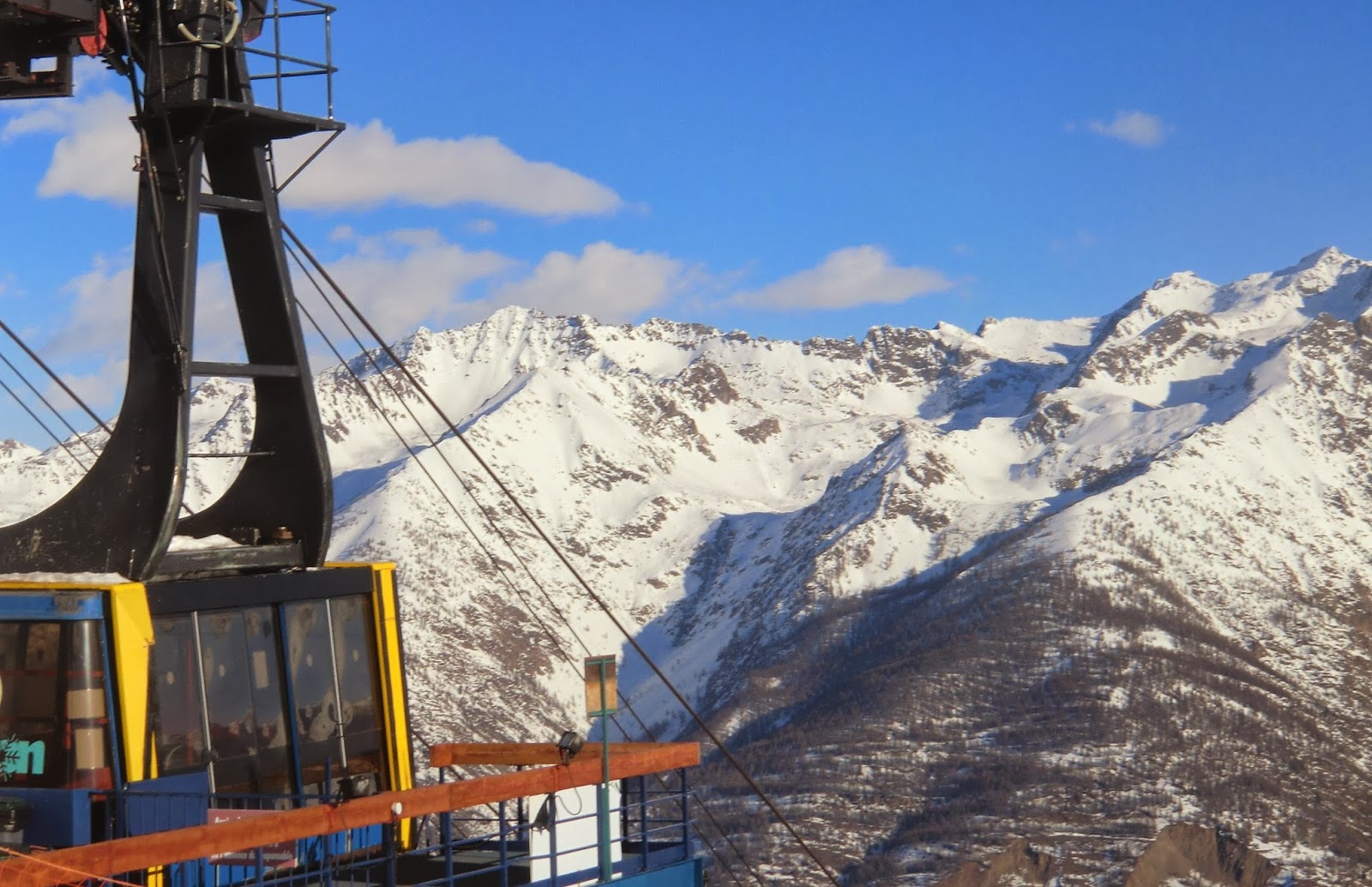Valentine's Day in Limone
Studying the ski map of Limone Piemonte (1010 m), one might first get the impression of a pretty small winter resort just 44 km from the Mediterranean. In addition, the highest lift reaches “only” 2085 m…how long is their season?
Having visited Limone several times before, we knew the reality is very different. Limone is one of the oldest winter sports resorts in Italy. They have a history of over 100 years. The runs are long and usually well maintained. The biggest continuous vertical descent is 1000 m, actually more than Auron and Isola 2000 nearby in France can offer. Maybe it’s the geography combined with meteorological facts that result in more snowfall. The cold northerly winds blowing over the Italian plain nearby meet the warmer and the more humid Mediterranean air here. The latest snow depth on their web site reported 350 cm on the top, 250 cm in the valley, avalanche risk 3/5.
Recent recurrent traffic problems in the Tinée valley have certainly turned the eyes to Limone. The Roya valley is by no means immune to traffic problems either. But from Limone you have at least the long “escape” route back to the coast via Italy. The driving time from Nice is about two hours. The recommended route from Nice is to take the A8 to Ventimiglia, then north along S20 and further along D6204 to the tunnel at Col de Tende. Check the inforoutes06 web site the morning you leave!
You don’t have to drive all the way down to the town of Limone if you’re on a day trip. Immediately after the tunnel on the Italian side, you can take
the small road left to reach Limone 1400.
Its lift system is connected with the rest of the resort.
The only way to reach the skiing area from the town is to use the gondola called Severino Bottero. It’s newish and fast but queues tend to build up here, especially in front the ticket booths. On the day of our visit, we had just managed to buy our ski passes when the gondola stopped. There were a lot people waiting and waiting. No information was given. Eventually we came back one hour later. It turned out that the wind speed had increased to a level that they had to close all lifts for the rest of the day. No cash refund was offered. They gave receipts that could be used for ski passes the next day or later this season.
Valentine’s Day started with clear skies and light winds. After some queuing again, yesterday’s purchases were refunded and up we went! No queues whatsoever here. The only limit was your performance. There are several great red runs, all well groomed so watch your speed! The black run number 16 called Olimpico Giacomo Marro back to the gondola station is very good as well, might be classified red somewhere else.
 When in Italy, you ski and eat with style. We went to our favorite high altitude restaurant. We opted for salad with parmesan and artichokes followed by wild boar in red wine sauce with polenta. Gustoso! Not bad at 1800 m. Furthermore, we stayed overnight at Grand Hotel Principe next to the gondola station. They too serve traditional Italian cuisine, as it used to be in the old days. Fresh ingredients, no nonsense, not Michelin but tasty! Not easy to find in Florence or Rome these days unless you know where to go.
When in Italy, you ski and eat with style. We went to our favorite high altitude restaurant. We opted for salad with parmesan and artichokes followed by wild boar in red wine sauce with polenta. Gustoso! Not bad at 1800 m. Furthermore, we stayed overnight at Grand Hotel Principe next to the gondola station. They too serve traditional Italian cuisine, as it used to be in the old days. Fresh ingredients, no nonsense, not Michelin but tasty! Not easy to find in Florence or Rome these days unless you know where to go.




































